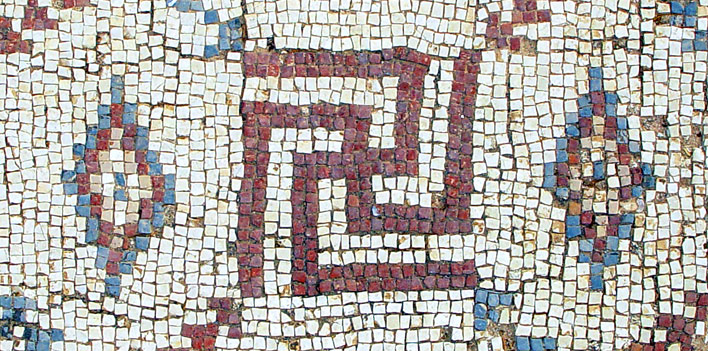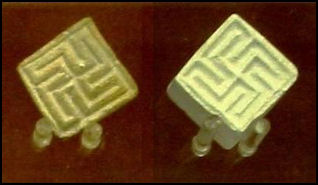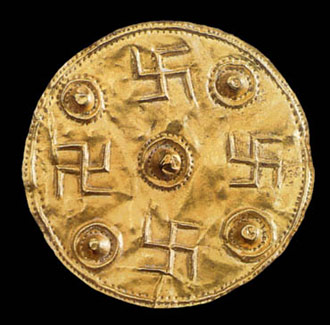
Swastika: The Power of a Symbol
The word swastika comes from the Sanskrit svastika, which means “good fortune” or “well-being” “lucky” or “auspicious.” To this day it is a sacred symbol in Hinduism, Jainism and Buddhism. It also has an ancient history in Europe, appearing on artifacts in both pre-Christian and Christian cultures. How did the Nazis aquire it and embue it with the power to contribute to such an ignominious period in human history?

The word swastika comes from the Sanskrit svastika, which means “good fortune” or “well-being” “lucky” or “auspicious.” To this day it is a sacred symbol in Hinduism, Jainism and Buddhism. It also has an ancient history in Europe, appearing on artifacts in both pre-Christian and Christian cultures. How did the Nazis aquire it and embue it with the power to contribute to such an ignominious period in human history?

During the late 19th and early 20th centuries the swastika was used in commerce; it was appropriated by Rudyard Kipling and used as his personal logo, and in World War I the U.S. 15th Infantry adopted it as their emblem; and The Girls’ Club of the Ladies Home Journal membership sign was a swastika.
So how did the Nazi Party acquire this symbol and use it to such great effect that it became synonymous with the Führer and Nazi Germany, with the power to contribute to such an ignominious period in human history?

This fascinating story is told by Prof. Malcolm Quinn, in his work The Swastika: Constructing the Symbol. In 1874 the businessman and adventurer Heinrich Schliemann, started excavations in Turkey at a site he believed to be the lost city of Troy of the Homeric epics. As he dug, he found spheres and pottery fragments bearing the images of swastikas. Wanting to find out what these symbols meant, Schliemann sought the advice of scholars, one of whom was the anti-Semite orientalist Emile-Louis Burnouf who had seen this same symbol in the lexicon of the Hindu epic the Rig Veda. The Vedas also talk of the Aryan nations. So Burnouf and his associates decided that the swastika was the ancient symbol of the Aryans, invading warriors who came from the north to displace the existing people of India, and that these were the same people represented by the Swastika symbols in the pottery fragments of Troy.
According to Professor Quinn “The Swastika fragments became for pseudo-scholars like Bernouff the perfect excuse to build a new mythology and invent a single pan-European colonial warrior race, using the Swastika as their emblem.”

Brunouff died in 1907, and a few decades later this symbol became the perfect emblem for Hitler’s ambitions for Germany. The Nazis didn’t want their history to be associated with Christians because Christianity was associated with Jews. When they gained control in 1933, the Nazi party symbol became the national symbol. In May of that year, the Reich’s leading designer, Goebbels, issued a decree called “The Law for Protection of National Symbols,” which insured the transcendence of the swastika by preventing its unauthorized commercial use. So the Swastika became shorthand for the Nazis and their evil agenda. As Quinn says: “The Swastika made German nobodies into Aryo-Germanic somebodies in much the same was as the commodity sign continues to set standards for judgments of value, class, and gender.”





